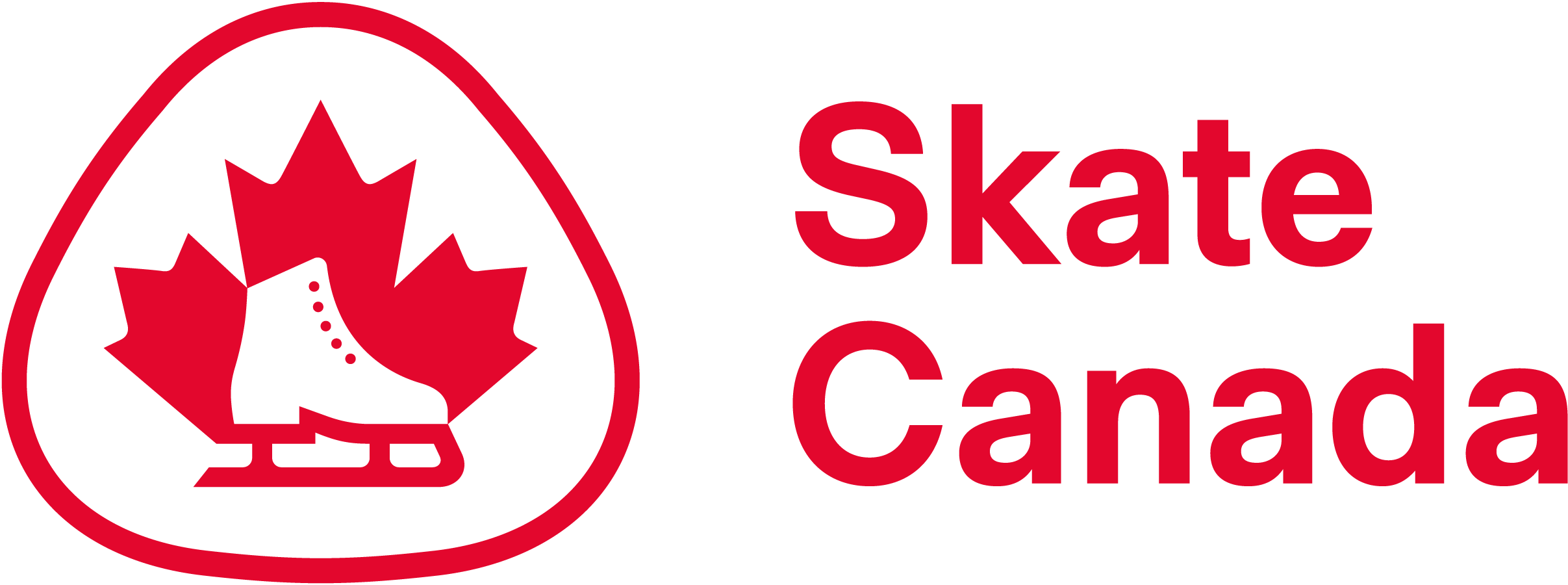Choosing The Right Skates For You!
Hockey Versus Figure Skates?
Skaters in the PowerSkate programs must wear hockey skates! Skaters in the Pre-CanSkate and CanSkate programs are welcome to wear either hockey or figure skates. There are some important differences between the two types of skates, but these don't matter too much at the early stages of skating (and falling over). Figure skates have less of a curve on the blade than hockey skates, which make them easier for some skaters. However, figure skates have "toe picks" on the front of the blades which are a tripping hazard if you are not used to them. If your skater knows that they want to learn to figure skate (spin and jump etc.) eventually, it will speed things up if they start in figure skates.
Skaters attending our sessions will have more fun and advance faster if they are properly and safely equipped. This means making sure that:
- PLEASE MAKE SURE THE SKATES ARE LACED UP TIGHT!!!!
- Skates fit comfortably
- There is room for toes to wiggle slightly
- Heels do not lift inside the skate more than ¼ inch
- An adult finger can fit in the top of the boot when done up
- Excess laces are tucked or tied up so that they do not hang loose or drag on the ice
EQUIPMENT CARE
To protect the skate blades, skate guards should be worn in any area that is not protected by rubber mats. At the end of every session, the blades should be wiped with a dry cloth to prevent rusting. Skate sharpening should be done periodically.
OTHER SKATE TIPS FOR YOUR SKATER
- Make sure your child's skates are the kind of skates they need for their future skating endeavors. If your child wants to play hockey, buy hockey skate and likewise for figure skates. If they change their mind over time there may be an adjustment period, for the blades are different from these two types of skates. Please do not shave the picks off of figure skates if your child wants to play hockey.
- We don't recommend the "plastic" type skates. They are extremely hard to break in and do not provide proper flexion in the boot. They also can be too stiff to skate in.
How do I buy skates for my child?
The purchase of a boot and blade is a major decision that can represent a substantial financial investment.
Fitting Basics: A skater’s size, weight, and skating level are very important. These aspects will determine what boot and blade to purchase and how long they will last. While seated, the boot should be snug in the heel, arch, and ball areas for best support. Toes should be able to wiggle freely but not slide to any great degree. After the boot is laced and the skater stands, the boot should feel slightly tighter. There should be little to no movement when the skater tries to life her or his heel. The toes should just be touching the front of the boot.
Toes should feel slight pressure but not severe bending or pain. Toes should also not be cramped or curled under. It is important to have a correctly fitted boot for optimal skater performance. The boot must be snugly fit so that it responds exactly to the skater’s movement. Additional room in the skate can cause the foot to slide and thus may impede the Skater’s progress.

Remember:
- Skates should fit snugly around the ankle and heel - there should be room for movement, but the ankle, instep, and heel must be firmly supported
- The tongue should be sufficiently wide so that it will stay in place and it should be well padded to prevent the laces from cutting into the foot
- The front opening of the boot should be sufficiently wide to pull the laces tight
- Avoid buying skates a size larger, as they tend to break down faster and hamper your child’s progress and more importantly could create long term foot problems
Buying used Skates and Blades: Good used skates can be okay for your child, especially in the beginning stages. If you do buy used skates, you may have to know a bit about the brand and model of the boot and blades you purchase. Ask your Coach about suggestions on what to look for. Sometimes a good used boot and blade set is better than an inexpensive, lower quality “sharpening life” left in it. Many skate companies have a website that describes an appropriate boot / blade combo for a particular level of skating.
Please note: At the Pre-STAR level, the focus is now on figure skating techniques, and as such, it is important to purchase proper figure skates. Purchasing skates, whether new or used, should be done at a store specializing in figure skating. If you are concerned about how to purchase skates, again, please feel free to speak with your coach about how to purchase skates appropriate for your child’s skating level. Staff at a specialized skating store are also knowledgeable and able to assist in making a proper choice.
Sharpening of Skates: Make sure you take your skates to a reputable figure skater sharpener who is familiar with the edges needed in figure skating. Do not remove the bottom pick, as it is essential for proper balance.
General Care of Boots and Blades: Proper care of the boots and blades can help them last longer. When removing skates, unlace them enough before taking them off so that the back of the boot does not break down or rip. Blades and soles must be dried carefully with a soft cloth. Cover dried blades with soft blade covers (terry cloth or soft fabric). Take skates out of the bag at home to let them air dry at normal temperatures to avoid rotting and rust.

